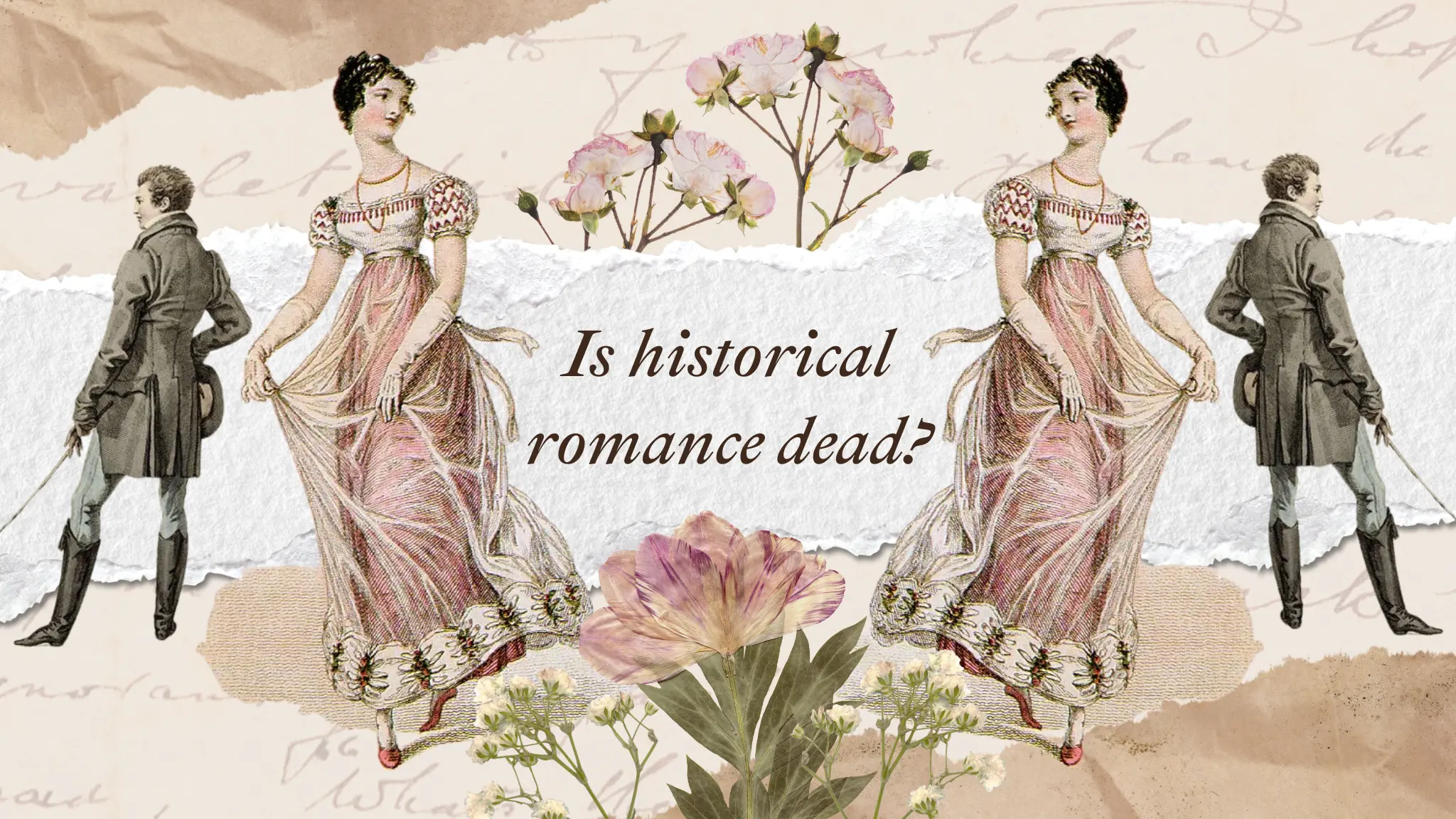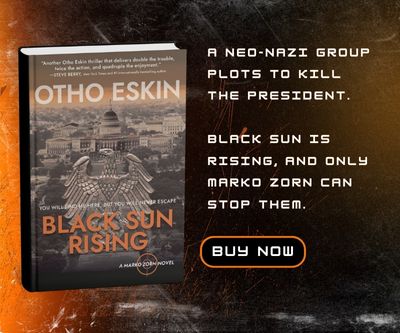Who killed the duke? Long the most popular hottie in the ballrooms of English historical romance, there’s a rumor running through Romancelandia that his demise is imminent.
For decades, historical romance has been the backbone of the romance genre. Whether you mark historical romance as beginning with the social comedies of Jane Austen (ironically a contemporary writer of her time, 1811-1817), the chauvinistic romantic adventures of Georgette Heyer (starting in the 1920s), or the birth of the modern historical with Kathleen E. Woodiwiss’s The Flame and the Flower in 1972, this subgenre accounted for approximately 30 percent of romance book sales for decades according to data from the Romance Writers of America.
Today, historical romance seems to be on life support. Top writers such as Lisa Kleypas, Julia Quinn and Sarah MacLean don’t have historical romance novels coming out this year. Formerly profitable midlist authors have been let go and historical romance series have been dropped.
“Is historical romance dying — or are they killing it?” asks New York Times bestselling author and Fated Mates podcast co-host Sarah MacLean.
MacLean cites a number of reasons for the downturn, but one is particularly troubling — the end of the mass market paperback. Publishers Weekly reported in February that Readerlink, the largest distributor of books to mass merchandisers, is scheduled to stop distributing mass market paperbacks by the end of 2025.
Mass market paperbacks — the smaller paperbacks you used to find at your local pharmacy and grocery store — have long been where midlist romance authors sell their books and top authors get a boost in sales. They make it possible for new readers to take a chance on unfamiliar authors at a low cost, especially if they prefer to read a printed book. At a time when many readers are trying to move away from Amazon, this might be a particular problem.
The demise of the mass market paperback happened in stages. First Berkely, then other leading publishers, began to slowly drop mass market paperbacks from their lines in favor of the larger, more expensive trade paperback. But make no mistake, mass market historical romances sold, says MacLean. “First month numbers when I was writing at the beginning of my career — I’m 15 years in — were in the tens of thousands. Mass market was on the shelf at Target, at Walmart, in every supermarket; you saw mass markets everywhere. They were either historical or a few [historical romance authors] would go into mass markets on reprint. All the mysteries, all the thrillers would have a reprint in mass market.”
As trade paperbacks became more and more popular, distribution of mass market paperbacks became more and more challenging. “Target, for example, figured out pretty quickly that we can make more money on a $17 trade paperback than a $7.99 mass market. Target sells no more mass [market]. They stopped that years ago,” MacLean says. Walmart is following suit.
As chains such as Borders Books closed and independent bookstores opened, the thinking about putting romance novels on their shelves shifted. According to MacLean, “At this point all historicals remain in mass market. We start to see the rise of indie bookstores across the country, not just romance bookstores but indie bookstores in general, that are starting to pay attention to romance because romance makes money. We’re talking about post Fifty Shades of Grey. Bookstores that would say to your face that ‘we don’t carry romance. Our readers don’t read romance,’ which we knew was wrong, are now like— ‘we can also make money on an $18 trade paperback.’ They start putting romance on the shelf and paying attention to the genre. They don’t have shelf space for mass market. Where historical might have joined them on the shelf, now historical is just sitting at Amazon, Walmart and drugstores.”
She continues: “Then a couple of years ago, Walmart said they’re taking fewer and fewer. A midlist historical writer, who could happily sell 2,000-3.000 copies of their book at Walmart the first month out, is faced with the fact that now Walmart doesn’t want them. They only want the top of the list. When that happens, the print runs get smaller. Target isn’t taking them. Walmart isn’t taking them. Barnes and Noble is taking very few, independent booksellers aren’t taking it, so the only way you’re going to find a historical is on Amazon, online or sometimes in a grocery store.”
Therein lies the heart of the problem. “The reality at this point is that you have to go looking for a historical. You start to see that we’re not building new readership because nobody is finding the books on the shelf,” MacLean says.
Additional issues compound this problem.
Amy Brewer, vice president of Metamorphosis Literary Agency in Olathe, Kansas says “People aren’t all that enamored of billionaires right now, and the duke was the billionaire of his day.” She’s not convinced that a lack of interest in British ballrooms signals an end to historic romance, however. She points to authors such as KJ Charles and Alexis Hall who write queer historical romance, often with themes about dismantling the patriarchy. “Historical romance isn’t dying,” she says, “it’s evolving to fit the times.”
Elizabeth Tucker, co-owner of the romance bookstore Montgomery and Taggert in Chester, Connecticut agrees. “There was a period when the popular romance podcast Smart Podcast, Trashy Books was advocating to try to save the contemporary romance. These things go in cycles. This is just an ebb in the wave. In three to five years historical romance will be back in popularity,” she says.
However, Tucker admits that she doesn’t get an influx of younger customers asking where to start reading historical romance like she does with romantasy. “Customers who read historical romance tend to be Millennials or older,” she says. And she points out that her customers don’t want the mass market paperbacks featuring the great romance authors. “They walk right by them,” she says.
MacLean agrees that packaging is part of the issue with historical romance. “Sarah J. Maas and I are friendly and I know for a fact she is a historical reader. The [A Court of Thorns and Roses] books are historical romance novels. We haven’t figured out how to package the books right so somebody who finishes ACOTAR comes over and tries Lisa Kleypas.”
Despite all of the strikes historical romance has against it, can we really afford to lose the subgenre at a time when Women’s History Month is being erased from the calendar and women’s contributions are being removed from the public record?
“Historical has long been the political arm of romance,” says MacLean. “It is the place where we can overtly represent the situation of women and other marginalized people in our current world and show them facing barriers and then triumphing by either winning or breaking them down.”
MacLean points out the importance of the work that is being done by today’s historical romance authors. “Adriana Herrera is doing trailblazing writing about Latinx women who are facing incredible issues, including abortion, which is current and important right now. She writes about an Afro-Latino duke and what it’s like to be the first of your kind in rarified air. Diana Quincy writes Middle Eastern heroines and heroes in her Regencies. They’re deeply sexy and so fun and also ask important questions about what it means to be Arab in the world. Felicia Grossman writes the Jewish experience. Joanna Shupe has written extensively about the Comstock Laws. I’ve written about police corruption, and abortion, not to mention bad men, patriarchy in every one of my books.”
In the end, MacLean doesn’t disagree with Brewer and Tucker. This longtime champion of historical novels holds out hope. “Historical is nowhere near dead. Every time we do an episode about historicals on the podcast, it’s our most listened to episode. One of those two recent episodes was about the tons of new people writing. They’re just not traditionally published.”
Want to help breathe some new life into a terrific subgenre and explore new authors? Tucker says, “If romantasy fans just read two historicals, the subgenre would find new fans. The world building is the same as it is in romantasy.”
And if you’d like to find some great new historical romance authors, MacLean and her co-host Jen Prokop already did the work for you. Check out this episode of Fated Mates featuring more than a dozen new authors.




